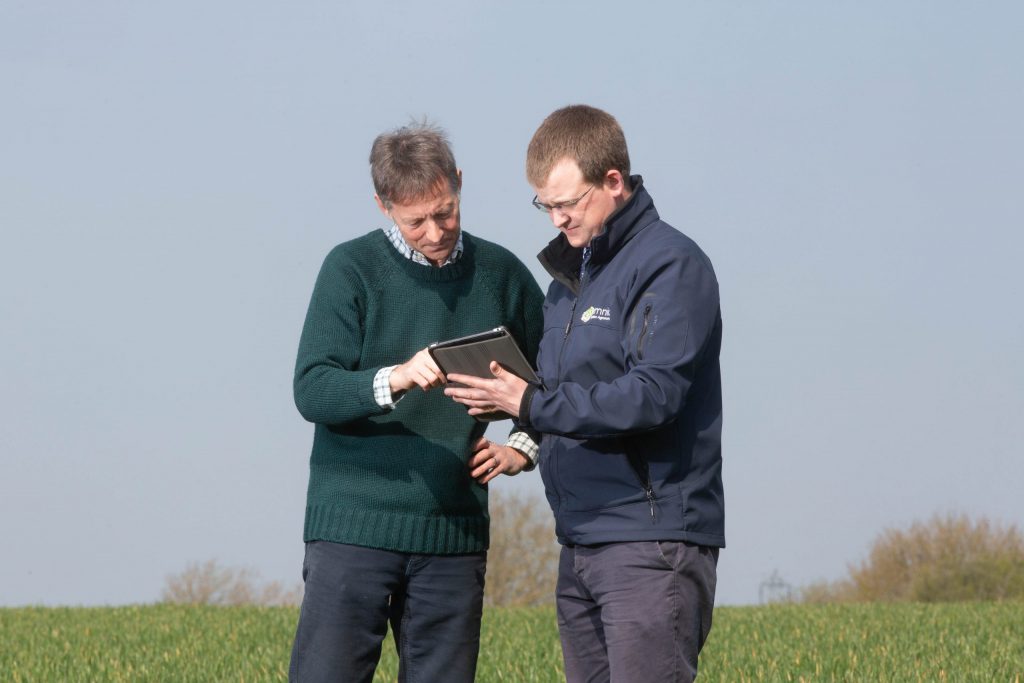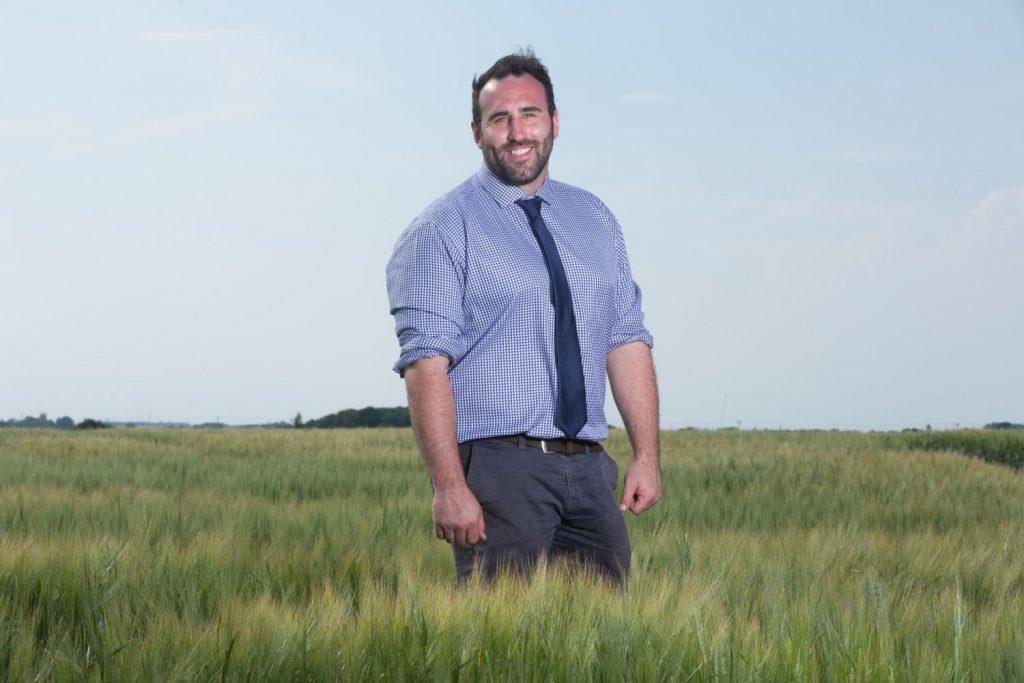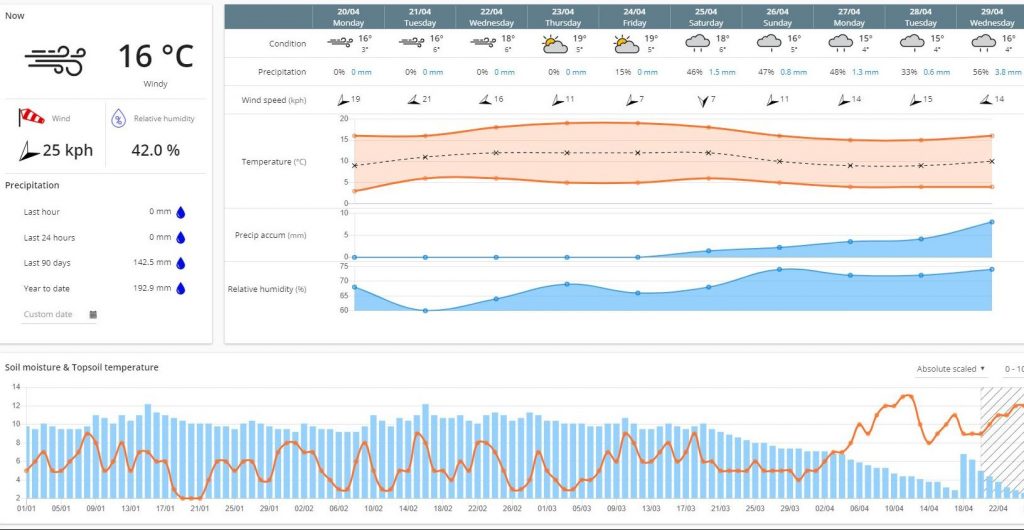Predicting the weather on a micro scale helps the bigger picture – Agronomist & Arable Farmer – Nick Strelczuk, David Howard
The application of precision technology has regularly been touted as the solution to improving agricultural production. ...
However, with so many products on the market, deciding which tools to use to support pesticide application decision making is becoming a real challenge. John Swire reports
Crop Monitor Pro was launched in September as the natural successor to the successful CropMonitor programme. It is a partnership between CHAP and Fera Science and enhances the existing regional service, used routinely by more than 3,000 individuals into a field- level support tool that can help growers decide which pesticides to apply and the optimum time to do so.
The tool has been in development since 2017 and brings together weather, soil, pathogen reports and crop growth stage to accurately predict the likelihood of disease outbreak on a given field. If the application of pesticides is recommended, the tool will indicate product choice based on weighting. It provides a traffic light system to easily identify which pathogens are most likely to cause problems.
The system uses local weather data split into a 2km X 2km grid pattern (more than 39,000 grid cells) across the UK to provide disease risk forecasts for up to four days into the future. The rates of false negative alerts are low – less than 5% in most foliar disease models.
All the models used on CropMonitor Pro have more than 85% accuracy and are based on up to 18 years of field data. The developers claim that the use of CropMonitor Pro for wheat growers has been shown to save an average of one fungicide spray per crop per season, generating an average farm saving of £1,680 from reduced fungicide costs and £4,704 from yield increases. In addition to increased profitability, decision support tools can benefit the wider environment and may play a role in the Government’s ELM scheme currently being developed.
In April, Hutchinson’s Omnia Precision Platform launched its latest development in the form of a climate module through which users can access current and historical weather data to make more accurate crop management decisions.
Nick Strelczuk, Hutchinsons precision technology specialist, says: “The Omnia Climate module provides more detailed and accurate weather data than is possible from physical weather stations, which are notoriously expensive, costing anything from £800-£1,000, and need constant maintenance.

Nick Strelczuk (R) with Helix host Andrew Pitts (L)
“For this reason, it’s never been feasible to have weather stations dotted around the farm, nor is it an option to drive around different units collecting data whenever a spray timing is looming. Subsequently, crop management decisions based on weather information are often inaccurate.”
Omnia’s Climate module uses virtual weather stations which can be positioned at any location, providing weather data accurate to 1km 2 of that station for a 10-day period.
“This means that on a holding that’s spread out, you can have multiple weather stations across the ground to give you more accurate information,” Mr Strelczuk adds.
The concept behind the module comes from the Predict & Justify project at Hutchinsons’ national Helix farm in Northamptonshire, says David Howard, head of integrated crop management.
“The premise of the project is to look at how data from the field can be turned into agronomical knowledge, so this means looking beyond data collection, and taking it a step further into interpreting the data to develop better and more accurate modelling to support better informed decision-making on farm.
“The Climate module brings together weather modelling and monitoring data and combines it with artificial intelligence (AI) and machine learning. This has allowed us to develop models which help to improve risk prediction on farm.

David Howard
“Improving the accuracy of crop modelling lends itself to proactive decision- making and more accurate agronomic advice, which is the cornerstone of integrated crop management.”
Based on this, Hutchinsons has developed three prediction models within the Climate module: crop growth, pest, disease and blight prediction modelling.
As crop growth is related to a number of climatic factors, particularly degree days, this information can be used to track crop growth and predict key growth stages.
Within the Climate module software, a combination of the 10-day forecast and long-term average weather data is used to predict when key growth stages are going to occur.
Users can allocate specific fields and are presented with a sliding scale to access visual representations of crop growth and certain growth stages. This allows them to plan inputs and workloads more effectively, whilst also predicting and alleviating crop stress.
However, like all of the tools within Omnia, the user can override the system, so if for example a growth stage is delayed, it can be reconfigured manually.
“It’s important that the model reflects what’s in the ground for it to be useful and valuable,” says Mr Howard.
Future plans will aim to utilise the AI within the model alongside layers of data already within Omnia to make modelling even more bespoke and accurate. For example taking into account varietal differences, seed rate, location, soil type, and inputs.
Example of the Climate model in Omnia:
Meanwhile, Sencrop’s wireless network technology uses weather stations on individual farms. These gather a range of local agri-environmental data including air temperature, rainfall, humidity, leaf wetness, and wind speed in real time. The information feeds into a user-friendly dashboard, accessible on desktop or through a mobile app, providing history, alerts, trends and seven-day forecasts.
Martin Ducroquet, Sencrop co-founder, says: “This enables farmers to make Decisions now be not from farmer’s data local analysis decisions on a daily basis through field- level weather statistics, with one or more weather stations providing specific, localised data that saves time, money and increases efficiency. However, the real power of the Sencrop system is unleashed through the collaboration of neighbouring farmers sharing data via a seamless transmission from their individual field stations.”
Decisions can now be made not just from the farmer’s own personal data but via local analysis and recommendations. This has already been proven elsewhere in Europe where Sencrop has operated since 2016 and today has 5,000 farmers, wine growers and arboriculturalists using the network to manage decisions such as sowing, irrigation and disease control programmes.
Sencrop’s aim is to create real value from extensive data that will benefit the agricultural community including farmers, agronomists, contractors, research organisations, insurers, and industry suppliers by offering more effective, faster and automated distribution of services and advice, tailored to specific, individual needs.
Blight monitoring and prediction
Potato growers usually have crops spread over a wide area so using data from one weather station to predict blight events is fairly inaccurate, according to David Howard.
“However, using the blight monitoring and predication model, it is possible to access precise weather data for a specific location for 10 days,” he says. “This makes understanding the exact risk much more accurate and is particularly useful in tight seasons to make sure that sprays are going on at the right place at the right time.”
Using a timeline, it is also possible for users to see what the risk is across a whole season, and then this can be compared with treatment programmes to ensure crops have protection right the way through the season.
“At times when growers are not able to get onto land to travel, they can revert back to this data which will allow them to make decisions about which fields are at the highest risk,” Mr Howard adds.
More information
Contact us for more information on Omnia’s Climate model and prediction models.
